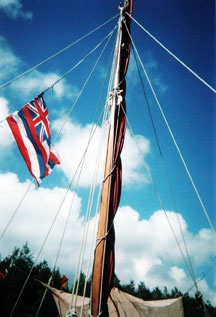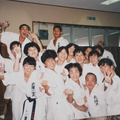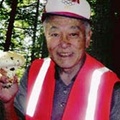As a volunteer for the Polynesian Voyaging Society, I would like to share info on the timeless Hokule'a Voyage to Japan and its significance to Nikkei concerns. I was not on this voyage, but since the crew has returned, Hana Hou-the magazine of Hawaiian Airlines, and the Polynesian Voyaging Society's website has featured articles and info on Ku Holo La Komohana: The Hokule'a voyage to Japan and the mastermind behind this journey-Mr. Nainoa Thompson.
The 2007 Hokule'a Voyage to Japan was a beautiful effort by the Polynesian Voyaging Society. This 5 month long journey that began in Honolulu ventured through Micronesia (Marshall Islands, Chuuk, Palau), and made ground in Okinawa in April with a final stop in June at Yokohama Bay after 9,570 miles. The voyage aimed to honor the cultural ties between Japan and Hawai'i, the immigration of Japanese to Hawai'i, and to celebrate the ways in which the influence and contributions of the Japanese community in Hawai'i are woven into Hawai'i's history as well as its future.
Nainoa mentioned that at the time Japanese and other plantation groups arrived in Hawai'i, they shared commonalities with Hawaiians in that both of the communities were very poor. When the Japanese plantation workers arrived, the Hawaiian population had already been devastated by the loss of their land, a loss of the shape of their culture, and most painfully of all, Nainoa says, "a loss of spirit".
Nevertheless, Nainoa asserts that it was these two cultures, Japanese and Hawaiian that lived together, worked together and "galvanized" many relationships and stories that comprise Hawai'i's history as well as shape its future. In that respect, voyage of the Hokule'a included visits to ports from which the Japanese immigrants in Hawai'i came. Nainoa believes also that it is a voyage like this that will instill pride and knowledge in our children.
There was an even greater, deeply personal reason that Nainoa worked tediously to make this voyage a reality. His late father Myron had a vision of expanding and bridging cultures between Japan and Hawai'i much earlier. There was also a man whom he considers one of his first mentors in building his incredible knowledge of the ocean, and that man was the family milk delivery man, Yoshio Kawano.
When Nainoa was little, growing up in Niu Valley, Yoshi would always take Nainoa out fishing. Nainoa's experience with Yoshi taught him a lot more than learning to tie knots and throw out a line. Nainoa mastered the ways of the ocean, the weather, and with the guidance of another mentor, Mau Piailug of Satawal, Micronesia, Nainoa became the first person in this century to reintroduce the art of Polynesian non-instrumental wayfinding to Hawai'i which served as a catalyst to the pride of the Hawaiian Renaissance.
Nainoa navigated the Hokule'a, a replica of an ancient Hawaiian voyaging canoe, to Tahiti, Aotearoa (New Zealand), and Rapa Nui (Easter Island) all without a compass, or a global positioning system (gps). He did this with his knowledge of the ways that stars rise and set, and his incredible ability to vision a destination beyond the horizon.
Nainoa's successful voyages challenged and disproved earlier claims by authors Thor Heyerdal and Andrew Sharpe that Polynesians possessed neither the capability nor (in a racist way) the intelligence to make voyages upwind and settle the Pacific Islands. The voyages also demonstrated how Polynesia and the rest of the Pacific were settled. Nainoa is a modern form of the ancient navigators.
In a deeper sense, this voyage was a tribute to Yoshi, Mau and Nainoa's father Myron's dream to strengthen ties with Hawai'i's Japanese community.
Thus, while in Japan, Nainoa made it a point to visit Okikamuro, a tiny island in the Seto Inland Sea where Yoshi's family came from. Nainoa brought a rock from Yoshi's family's house as a gift to the island and to the memory of Yoshi.
The priest who accepted Nainoa's gift said:
"I heard that Yoshi taught Nainoa that human beings have the ability to become one with the ocean, and I believe that teaching is very important for us today. In Buddhist teaching, we believe that the mountains, forests, grass, stones---everything has a Buddha nature inside and is sacred. I believe that is a very important teaching not only for us in Japan, but everywhere in the world".
The voyage also had a mission of peace. At Setonaikai-Iwaijima just prior to his Oshima visit, one of Nainoa's crewmembers-Kalepa Babayan was presented a kerosene lantern whose flame was said to be lit from a fire that started in the Hiroshima nuclear inferno. Kalepa asked Nainoa to hold a ceremony and douse the flame. And when Nainoa arrived in Oshima, he held a ceremony in which everybody gathered and Nainoa said:
"And now our canoe has been giving the honor of carrying this powerful symbol of peace, and privilege to maybe put an end to warfare and bigotry. So to all who have brought the canoe to this moment in time, I am eternally grateful".
He poured seawater from a coconut shell onto the flame and extinguished it saying:
"No more, no more hatred in this world. Let's just drown it".
What a way to pay homage. What an incredible group Nainoa and his crew are. This really is a beautiful story of how strong the relations have been forged across two cultures and such a genuine way to celebrate this relationship. Please stay posted for Nainoa's next voyage starting in 09-to train a new, younger generation of navigators and crew, and to spread the messege about how to deal with global warming.
Thank you for letting me share this story with you as it relates to Japanese immigration and history.
For more information, please go to www.hanahou.com. To see more details, maps, and blogs about the voyage online, please also go to Polynesian Voyaging Society website and look for the Japan Voyage. Please also watch Nainoa on YouTube or go to YouTube and type in "Hokule'a 2007 Voyage" to hear and see Nainoa talk about the genesis of this amazing voyage.
© 2008 Thomas Tsutsumoto





